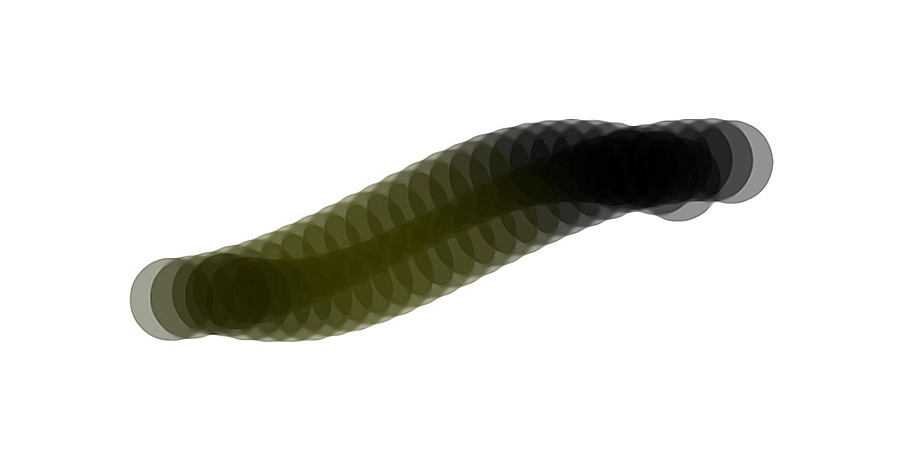science

Procrastination is a familiar and widely discussed proclivity: postponing tasks that can be done earlier. Precrastination is a lesser known and explored tendency: completing tasks quickly just to get them done sooner.
Recent research suggests that precrastination may represent an important penchant that can be observed in both people and animals.
{ Learning & Behavior | Continue reading }
art { Vogue, June 1972 | Tom Wesselmann, Smoker #9, 1973 }
psychology, tom wesselmann | October 8th, 2018 7:16 am

We suggest that advanced civilizations could cloak their presence, or deliberately broadcast it, through controlled laser emission.
Such emission could distort the apparent shape of their transit light curves with relatively little energy, due to the collimated beam and relatively infrequent nature of transits.
We estimate that humanity could cloak the Earth from Kepler-like broad-band surveys using an optical monochromatic laser array emitting a peak power of ∼30 MW for ∼10 hours per year.
{ Monthly Notices of the Royal Astronomical Society | Continue reading }
Physics, space | October 8th, 2018 7:09 am

In April 2018, the servers of the popular video game “Fortnite” crashed for 24 hr. During this period, Pornhub (a popular pornographic website) analyzed trends in pornography access, finding that: (a) the percentage of gamers accessing Pornhub increased by 10% and (b) the searches of pornographic videos using the key term “Fortnite” increased by 60%.
{ Journal of Behavioral Addictions | Continue reading }
related { How Fortnite became the most important video game on the planet }
update { Online divorce service says ‘Fortnite addiction’ cited in 200 divorces }
pochoir, brush and india ink { Roy Lichtenstein, Hand Loading Gun, 1961 }
leisure, porn, psychology, technology | September 17th, 2018 6:59 am

Knowing yourself requires knowing not just what you are like in general (trait self-knowledge), but also how your personality fluctuates from moment to moment (state self-knowledge). We examined this latter form of self-knowledge. […]
People had self-insight into their momentary extraversion, conscientiousness, and likely neuroticism, suggesting that people can accurately detect fluctuations in some aspects of their personality. However, the evidence for self-insight was weaker for agreeableness. This apparent self-ignorance may be partly responsible for interpersonal problems and for blind spots in trait self-knowledge.
{ PsyArXiv | Continue reading }
oil on canvas { Willem de Kooning, Untitled XXIX, 1983 }
psychology | September 11th, 2018 3:00 pm

We investigated the association between sexy-selfie prevalence and income inequality. […] Among 5,567 US cities and 1,622 US counties, areas with relatively more sexy selfies were more economically unequal. […] We investigated and confirmed that economically unequal (but not gender-oppressive) areas in the United States also had greater aggregate sales in goods and services related to female physical appearance enhancement (beauty salons and women’s clothing).
{ Proceedings of the National Academy of Sciences | Continue reading }
“Selfies” (self-taken photos) are a common self-presentation strategy on social media. This study experimentally tested whether taking and posting selfies, with and without photo-retouching, elicits changes to mood and body image among young women. […] Women who took and posted selfies to social media reported feeling more anxious, less confident, and less physically attractive afterwards compared to those in the control group. Harmful effects of selfies were found even when participants could retake and retouch their selfies.
{ Body Image | Continue reading }
When young children during their early development for the first time get their head around the fact that the reflection in the mirror is them, they are struck with a terrifying realization: All at once it dawns on them that this is how they present themselves to the world – and that the world might be repulsed by the sight. Animals, it seems, are not able to make that discovery. […] Hearing a recording of one’s own voice for the first time produces a similarly uncanny sensation.
{ Rolf Degen | Continue reading }
psychology, sex-oriented, social networks | September 10th, 2018 9:21 am

Two years ago a New Scientist headline announced the “world’s first baby born with new ‘3 parent’ technique.” Whereas an embryo is usually produced by one sperm and one egg, this technique uses genetic material from three separate people. First performed by a New York fertility clinic in Mexico to evade US legal restrictions, the procedure has now been replicated several times. […]
Two cases in the UK and Mexico involve a woman who carries a rare disease of her mitochondria, the cellular structures that produce energy in our cells. Mitochondria have their own DNA and can harbor their own genetic diseases. These are passed on solely through the maternal line, because mitochondria are found in eggs but not in sperm. One approach to blocking transmission of these illnesses involves inserting the DNA-filled nucleus from the egg of the woman into a donor egg full of healthy mitochondria but stripped of its own nucleus. Fertilize that hybrid egg with a sperm, and presto! A child could be born nine months later with DNA from three people and without a catastrophic mitochondrial disorder. […] Children conceived with a third person’s mitochondria are, it follows, the offspring of three parents. […]
Mitochondria, it turns out, were originally bacteria; their free-wheeling existence came to an end one day deep in evolutionary history when they entered another single-celled organism and started a new life inside. […]
This is not what we think of as Darwinian evolution, the transmission of genes and traits down the family line. DNA, it turns out, can also be passed laterally, between individuals, including those of different species. […] We may like to think of DNA as the neat bequest of our parents, the fusion of two unique, circumscribed human lineages. Yet it is—and we are—something more: short strands within a vast interwoven genetic web, stretching back to the earth’s earliest days, linking all living things.
{ New Republic | Continue reading }
evolution, genes | August 23rd, 2018 1:08 pm

Human memory systems are subject to many imperfections, including memory distortions and the creation of false memories. Here, we demonstrate a case where memory distortion is adaptive, increasing the overall accuracy of memories. […]
Although participants’ memories were systematically distorted, they were distorted in a way that is consistent with minimizing their average error […]
Thus, memory distortion may not always be maladaptive: in some cases, distortion can result from a memory system that optimally combines information in the service of the broader goals of the person. Furthermore, this framework for thinking about memory distortion suggests that false memory can be thought of on a continuum with true memory: the greater uncertainty participants have about an individual item memory, the more they weight their gist memory [Gist traces are fuzzy representations of a past event]; with no item information, they weight only their gist memory.
{ PsyArXiv | Continue reading }
photo { Ana Mendieta, Untitled, from Silueta Series, Iowa, 1978 }
memory, photogs | August 20th, 2018 3:29 am

When scientists began tracking the health of 268 Harvard sophomores in 1938 during the Great Depression, they hoped the longitudinal study would reveal clues to leading healthy and happy lives. […] They eventually expanded their research to include the men’s offspring, who now number 1,300 and are in their 50s and 60s, to find out how early-life experiences affect health and aging over time. […]
Over the years, researchers have studied the participants’ health trajectories and their broader lives, including their triumphs and failures in careers and marriage. […]
“The surprising finding is that our relationships and how happy we are in our relationships has a powerful influence on our health,” said Robert Waldinger, director of the study. […] Close relationships, more than money or fame, are what keep people happy throughout their lives, the study revealed. […] Those who kept warm relationships got to live longer and happier, said Waldinger, and the loners often died earlier. “Loneliness kills,” he said. “It’s as powerful as smoking or alcoholism.” […]
The study showed that the role of genetics and long-lived ancestors proved less important to longevity than the level of satisfaction with relationships in midlife.
{ Harvard Gazette | Continue reading }
relationships, science | August 18th, 2018 2:04 pm

The Grim Reaper, the personification of death, is a well known mythological and literary figure. Reported characteristics include a black cloak with cowl, a scythe, and cachexia. High quality scientific research linking the Grim Reaper to mortality has been scarce, despite extensive anecdotes.
Walking speed is a commonly used objective measure of physical capability in older people, predicting survival in several cohort studies. A recent meta-analysis found that being in the lowest fourth of walking speed compared with the highest was associated with a threefold increased risk of mortality. Moreover, the association between slow walking speed and mortality seems consistent across several ethnic groups and shows a dose-response relation. Although the association between walking speed and mortality has been well documented, the plausible biological relation between the two remains unclear.
We assessed whether the relation between slow walking speed and mortality results from the increased likelihood of being caught by Death. By assessing this relation using receiver operating characteristics curve analysis, we hypothesised we would be able to determine the walking speed of the Grim Reaper—information of importance to public health. […]
[1705] men have been followed for a mean of 59.3 months. Walking speed at baseline was not available in 77 men, mostly through inability to complete the test. A total of 266 deaths occurred during follow-up. […]
Based on receiver operating characteristics analysis and estimation of the Youden index, a walking speed of 0.82 m/s (2 miles (about 3 km) per hour) was most predictive of mortality. Therefore, we predict that this is the likely speed at which the Grim Reaper prefers to ambulate under working conditions. Older men who walked at speeds greater than 0.82 m/s were 1.23 times less likely to encounter Death. In addition, no men walking at speeds of 1.36 m/s (3 miles (about 5 km) per hour) or above were caught by Death (n=22, 1.4%). This supports our hypothesis that faster speeds are protective against mortality because fast walkers can maintain a safe distance from the Grim Reaper. Interestingly, the predicted walking speed of Death estimated in the present study is virtually identical to the gait speed (0.80 m/s) associated with median life expectancy at most ages and for both sexes in a recent meta-analysis of gait speed and mortality using data from diverse populations. This indicates that the preferred walking speed of the Grim Reaper while collecting souls is relatively constant irrespective of people’s geographical location, sex, or ethnic background.
{ British Medical Journal | PDF }
incidents, science | August 18th, 2018 10:39 am

The new “eyes wide shut” illusion uses a standard enlarging (shaving or makeup) mirror. Close one eye and look at the closed eye in the mirror; the eye should take up most of the mirror. Switch eyes to see the other closed eye. Switch back-and-forth a few times, then open both eyes. You see an open eye. Which eye is it? To find out, close one eye. Whichever you close, that’s the eye you see. How can this be possible? The brain is fusing two images of the two eyes.
{ Perception | Continue reading | Thanks Brad! }
However, no one has hitherto laid down the limits to the powers of the body, that is, no one has as yet been taught by experience what the body can accomplish solely by the laws of nature, in so far as she is regarded as extension. No one hitherto has gained such an accurate knowledge of the bodily mechanism, that he can explain all its functions; nor need I call attention to the fact that many actions are observed in the lower animals, which far transcend human sagacity, and that somnambulists do many things in their sleep, which they would not venture to do when awake: these instances are enough to show, that the body can by the sole laws of its nature do many things which the mind wonders at.
Again, no one knows how or by what means the mind moves the body, nor how many various degrees of motion it can impart to the body, nor how quickly it can move it.
{ Spinoza, Ethics, III, Proposition II, Scholium | Continue reading }
unrelated { eye colour may not be a priority when choosing a partner }
brain, eyes, spinoza | August 9th, 2018 2:46 pm

The Cynical Genius Illusion
Competent individuals held contingent attitudes and endorsed cynicism only if it was warranted in a given sociocultural environment.
Less competent individuals embraced cynicism unconditionally, suggesting that — at low levels of competence — holding a cynical worldview might represent an adaptive default strategy to avoid the potential costs of falling prey to others’ cunning.
{ Personality and Social Psychology Bulletin | Continue reading }
photo { Susan Unterberg, Horse eyes #3, 1999 }
psychology | July 22nd, 2018 8:52 am

Two theoretical frameworks have been proposed to account for the representation of truth and falsity in human memory: the Cartesian model and the Spinozan model. Both models presume that during information processing a mental representation of the information is stored along with a tag indicating its truth value. However, the two models disagree on the nature of these tags. According to the Cartesian model, true information receives a “true” tag and false information receives a “false” tag. In contrast, the Spinozan model claims that only false information receives a “false” tag, whereas untagged information is automatically accepted as true. […]
The results of both experiments clearly contradict the Spinozan model but can be explained in terms of the Cartesian model.
{ Memory & Cognition | PDF }
art { Richard Long, Dusty Boots Line, The Sahara, 1988 }
neurosciences, spinoza | July 8th, 2018 9:42 am

In 2014, stories appeared in national and international media claiming that the condition of “selfitis” (the obsessive taking of selfies) was to be classed as a mental disorder by the American Psychiatric Association and that the condition could be borderline, acute, or chronic. However, the stories were a hoax but this did not stop empirical research being carried out into the concept. The present study empirically explored the concept and collected data on the existence of selfitis with respect to the three alleged levels (borderline, acute, and chronic) and developed the Selfitis Behavior Scale (SBS).
{ International Journal of Mental Health and Addiction | Continue reading }
photo { Francesca Woodman, Untitled, Rome, Italy, 1977–1978 }
photogs, psychology | June 20th, 2018 8:13 am
the intensity of the emotional response people experience when they act dishonestly is reduced every time they lie
{ NBC | Continue reading }
buffoons, psychology | June 6th, 2018 2:41 pm

[L]ife may have been seeded here on Earth by life-bearing comets as soon as conditions on Earth allowed it to flourish (about or just before 4.1 Billion years ago). […]
Evidence of the role of extraterrestrial viruses in affecting terrestrial evolution has recently been plausibly implied in the gene and transcriptome sequencing of Cephalopods. The genome of the Octopus shows a staggering level of complexity with 33,000 protein-coding genes more than is present in Homo sapiens. Octopus belongs to the coleoid sub-class of molluscs (Cephalopods) that have an evolutionary history that stretches back over 500 million years, although Cephalopod phylogenetics is highly inconsistent and confusing. Cephalopods are also very diverse, with the behaviourally complex coleoids, (Squid, Cuttlefish and Octopus) presumably arising under a pure terrestrial evolutionary model from the more primitive nautiloids. However the genetic divergence of Octopus from its ancestral coleoid sub-class is very great, akin to the extreme features seen across many genera and species noted in Eldridge-Gould punctuated equilibria patterns (below). Its large brain and sophisticated nervous system, camera-like eyes, flexible bodies, instantaneous camouflage via the ability to switch colour and shape are just a few of the striking features that appear suddenly on the evolutionary scene. The transformative genes leading from the consensus ancestral Nautilus to the common Cuttlefish to Squid to the common Octopus are not easily to be found in any pre-existing life form — it is plausible then to suggest they seem to be borrowed from a far distant “future” in terms of terrestrial evolution, or more realistically from the cosmos at large. Such an extraterrestrial origin as an explanation of emergence of course runs counter to the prevailing dominant paradigm. […]
One plausible explanation, in our view, is that the new genes are likely new extraterrestrial imports to Earth — most plausibly as an already coherent group of functioning genes within (say) cryopreserved and matrix protected fertilized Octopus eggs. […]
Hoyle and Wickramasinghe thus argued and predicted on the basis of the then available evidence that microorganisms and virus populations in the comets and related cosmic bolides appear to have regularly delivered living systems (organisms, viruses and seeds) to the Earth since its formation, and continue to do so. […]
Darwinian evolution and its various non-Darwinian terrestrial drivers are therefore most likely caused by the continuing supply of new virions and micro-organisms from space with their genetic impact events written all over our genomes. Indeed a strong case can be made for hominid evolution involving a long sequence of viral pandemics, each one of which was a close call to total extinction of an evolving line. The most crucial genes relevant to evolution of hominids, as indeed all species of plants and animals, seems likely in many instances to be of external origin, being transferred across the galaxy largely as information rich virions. In some cases it is possible to imagine multicellular life-forms that were established on an icy cometary or planetary body to be transferred as frozen eggs, embryos or seeds in large icy bolides that have been transported to the Earth in soft landings.
{ Progress in Biophysics and Molecular Biology | PDF }
photo { Ezra Stoller, Philip Morris headquarters, Richmond, 1972 }
evolution, genes, science | May 14th, 2018 7:22 am

In Study 2, we moved chairs together in Starbucks across the country so that they were partially blocking the aisle (n = 678).
People in northern China were more likely to move the chair out of the way, which is consistent with findings that people in individualistic cultures are more likely to try to control the environment. People in southern China were more likely to adjust the self to the environment by squeezing through the chairs. Even in China’s most modern cities, rice-wheat differences live on in everyday life.
{ Improbable | Continue reading }
psychology | May 1st, 2018 7:47 am

Across four experiments participants chose between two versions of a stimulus which either had an attractive left side or an attractive right side. […]
In each experiment participants showed a significant bias to choose the stimulus with an attractive left side more than the stimulus with an attractive right side. The leftward bias emerged at age 10/11, was not caused by a systematic asymmetry in the perception of colourfulness or complexity, and was stronger when the difference in attractiveness between the left and right sides was larger.
The results are relevant to the aesthetics of product and packaging design and show that leftward biases extend to the perceptual judgement of everyday items. Possible causes of the leftward bias for attractiveness judgements are discussed and it is suggested that the size of the bias may not be a measure of the degree of hemispheric specialization.
{ Laterality | Continue reading }
art { Adrian Piper, Catalysis III, 1970 }
eyes, marketing | April 16th, 2018 10:30 am

The image of the world that we see is continuously deformed and fragmented by foreshortenings, partial overlapping, and so on, and must be constantly reassembled and interpreted; otherwise, it could change so much that we would hardly recognize it. Since pleasure has been found to be involved in visual and cognitive information processing, the possibility is considered that anhedonia (the reduction of the ability to feel pleasure) might interfere with the correct reconstruction and interpretation of the image of the environment and alter its appearance.
{ Schizophrenia Research and Treatment | Continue reading }
eyes, neurosciences | April 16th, 2018 10:16 am

It is often claimed that negative events carry a larger weight than positive events. Loss aversion is the manifestation of this argument in monetary outcomes. In this review, we examine early studies of the utility function of gains and losses, and in particular the original evidence for loss aversion reported by Kahneman and Tversky (Econometrica 47:263–291, 1979). We suggest that loss aversion proponents have over-interpreted these findings.
{ Psychological Research | Continue reading }
economics, psychology | April 16th, 2018 10:15 am

A distant galaxy that appears completely devoid of dark matter has baffled astronomers and deepened the mystery of the universe’s most elusive substance.
The absence of dark matter from a small patch of sky might appear to be a non-problem, given that astronomers have never directly observed dark matter anywhere. However, most current theories of the universe suggest that everywhere that ordinary matter is found, dark matter ought to be lurking too, making the newly observed galaxy an odd exception. […]
Paradoxically, the authors said the discovery of a galaxy without dark matter counts as evidence that it probably does exist.
{ Guardian | Continue reading }
photo { Luc Kordas }
mystery and paranormal, space | March 29th, 2018 12:40 pm





















